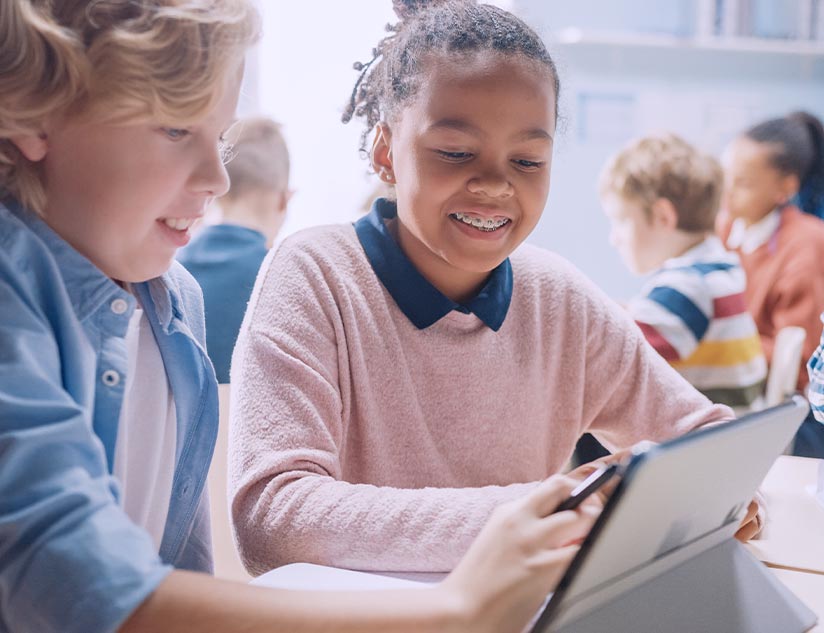The pace at which technology is advancing today is unprecedented. Take the now ubiquitous mobile phone. Within a decade, it has transformed from being a rarity to a becoming necessity, while gaining enormous computational power. In fact, an average American spends almost 3 hours a day on their smartphone, as of 2019. The number is even higher for Gen Zers and Millennials, for whom the term “nomophobia” was coined. These changes have made a great impact on not only how today’s population behaves but also on how they engage with the world around them, including the world of education. Today, the best academic outcomes are achieved through the use of interactive content.
What is Interactive Content
Essentially anything that makes the learner an active participant in the learning process is known as interactive content. Instead of being just a passive listener while the teacher gives a lecture, interactive content allows the student to be actively involved in the process. There are many types of interactive content that can be used to make learning more engaging for students, such as interactive video, infographics, puzzles, quizzes, and games. The best part is that integrating such interactive elements with the course material has become incredibly simple with the help of advanced learning platforms.
The way to engage Gen Z in education and enhance academic outcomes, therefore, is through the incorporation of digital learning at all levels of education, including higher ed.
How Interactive Content Enhances Education
Educational technology, in the form of digital learning platforms, has revolutionized learning for the better. The good thing is that the education sector is realizing the potential Ed Tech offers. In fact, the e-learning market is expected to grow at a CAGR of 7% from 2019 to 2025. This would take the total e-learning market value to over $300 billion by 2025.
One of the main reasons for this rising popularity is the ability of a robust e-learning platform, such as MagicBox™, to integrate interactive elements within eBooks. With interactive content, such as videos, audio, gamification and more, here’s what educational institutions gain.
Increases Engagement
According to Eric Mazur, Professor of Physics at Harvard School of Engineering and Applied Sciences, students learn much more actively when they are required to engage with the learning material. With the help of interactive elements, such as videos and gamification, student engagement rises significantly.
With the use of interactive content, all the senses are active during the lesson. This activates different areas of the neurological system, making it easier to understand and remember. It has also been found that such elements increase the behavioral, emotional and cognitive engagement of the human brain.
Makes Learning Easy
By integrating interactive elements in the learning material, the process of learning becomes much easier for children. There can be a large number of interactive features, such as annotations, pen tools, page zoom, read aloud, search options and much more. These tools help students easily find relevant information, highlight content, make notes, bookmark pages and chapters, and even adjust the brightness and change font size according to their preference.
Interactive content also allows the transmission of information in small bite-sized packets, offering microlearning opportunities. These pieces can take 3 to 5 minutes to consume and are great for young learners. Microlearning has been found to increase the retention of information as well as its application. It also improves engagement.
Improves Attention Span
It is no secret that attention spans have declined to becoming worse than that of a goldfish. How does one hold the attention of a species that might soon be known for having the shortest attention span? What does hold the attention of Gen Zers is online content. They are happy watching videos, interacting on social media and even searching for information on their mobile devices for prolonged periods of time.
With the use of interactive elements, therefore, holding the attention of today’s students becomes easy. Adding a gaming element, for instance, makes the whole process incredibly fun, keeping students involved for longer.
Better Accessibility
One of the biggest benefits of interactive learning is its ability to provide education to those with disabilities. Elements such as text to speech help in making learning accessible to those with dyslexia, visual impairment or learning disabilities. The use of gamification has been found to be greatly beneficial for those with ADHD, helping reduce disruptive behavior in the classroom. Not only this, interactive learning has been found to be helpful in teaching students with autism as well. Such interactive content can be conveniently integrated into lesson modules through highly flexible and customizable learning platforms, such as MagicBox™.
Real Time Feedback
Feedback and assessment are vital for any learning process. And, when the feedback is instantaneous, the improvement process becomes faster. By making use of interactive elements, students can instantly find out how they are performing. Apart from that, the whole process of getting feedback becomes much more fun. For instance, the use of leaderboards and rewards like points or badges earned help build healthy competition and motivate students to perform better.
What the Future Holds in Store
With the way Ed Tech is advancing, the future looks bright for the education sector. Learning can now be much more personalized, addressing the needs and learning styles of individual students. The teaching approach and strategies can be centered around the strengths, weaknesses, aspirations and preferences of the student. It has also been found through neurological studies that personalized learning positively impacts the way information is received by the brain. The findings have been supported by a research conducted by the Bill & Melinda Gates Foundation.
Learning is set to become much more experimental and experiential in the coming years. With the use of AI and VR tools, students would be able to have a much more hands-on experience of what they are learning. There is also great potential for the use of 3D printing in learning. Classrooms would become much more than physical spaces, not bound by four walls.















